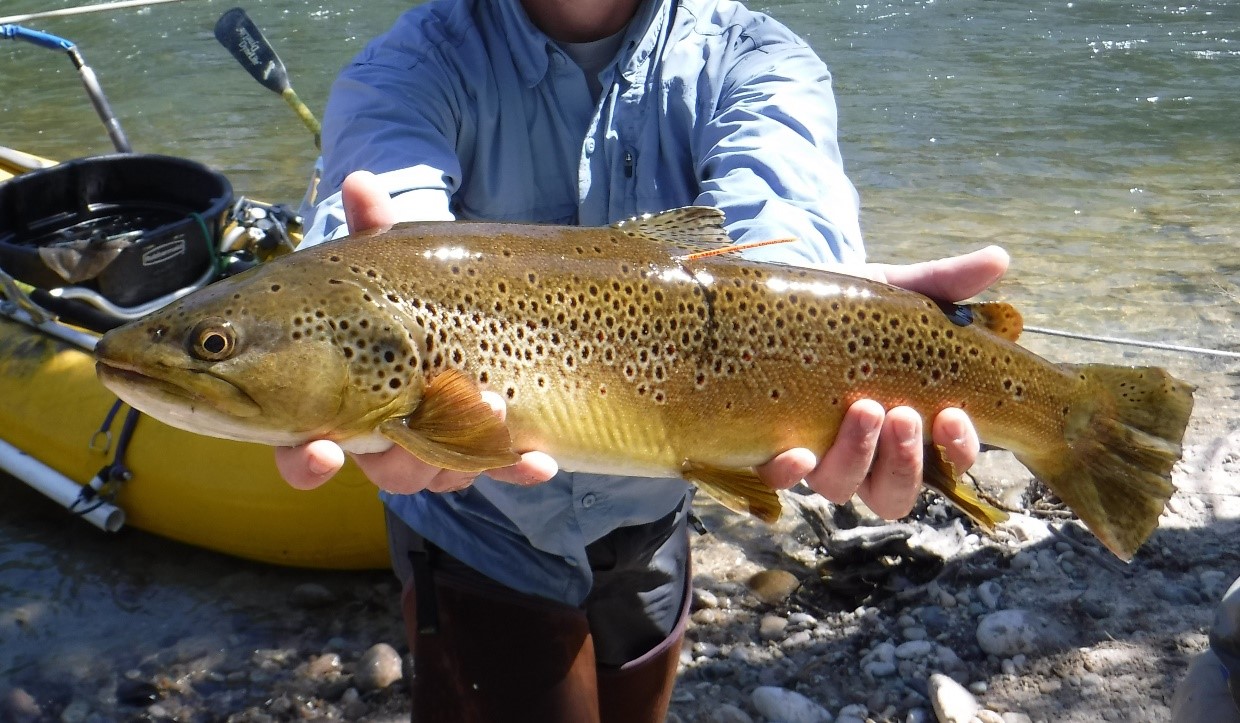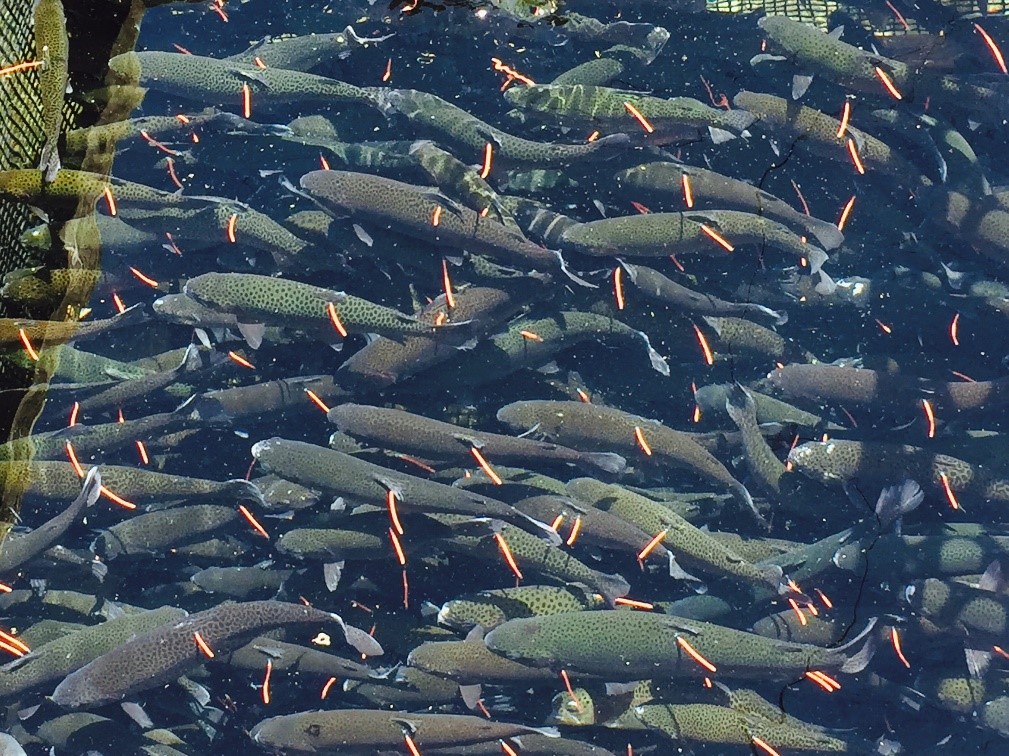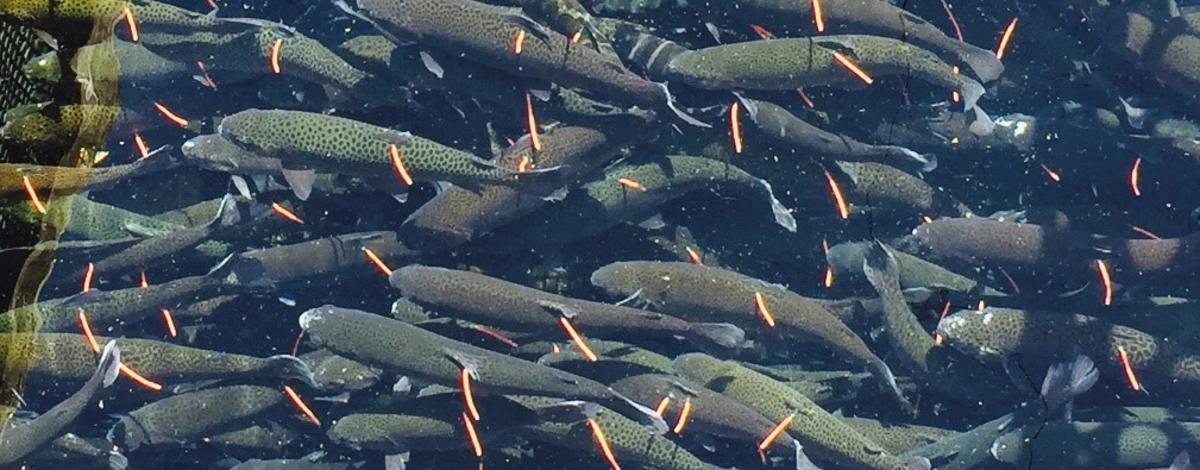If you have fished long enough in Idaho, you may have encountered a tagged fish. If you haven’t yet, it is probably only a matter of time until you do. No, we are not referring to a unique species of fish, but instead, we are talking about T-bar anchor tags. What are they? T-bar anchor tags are tags (usually orange in color) that are externally attached to various fish species to help inform fisheries biologists how many fish in a given area or population are caught by Idaho anglers.
These types of tags have been around for a long time. However, it wasn’t until the mid-2000s that Fish and Game developed a system to use these tags on a statewide scale to estimate angler catch and harvest rates for any fish species. We won’t bore you with the science behind this but in short, our research staff used varying levels of cash reward tags to figure out the reporting rate for non-reward tags. That was the missing piece of information that was necessary to use angler tag reports at a larger scale.
This program, known as Tag, You’re It!, was so innovative that it won an American Fisheries Society national Sportfish Restoration award in 2012 and has been a mainstay in Idaho fisheries management ever since.

Fast forward nearly a decade, and Fish and Game staff are using this valuable tool more than ever. In the Southwest Region, biologists are using these tags to answer a multitude of management questions. Recently, these tags were used to better understand how many transplanted adult steelhead are caught in the Boise River. You can read more about that work here (Catching steelhead in Idaho’s capital city).
In 2020 and 2021, staff is repeating a study that was conducted in 2015 and 2016 using these tags to estimate how many wild rainbow and brown trout are caught and harvested in the Boise River between Diversion Dam and Middleton. Those tag returns are showing that despite the increased popularity of angling in the lower Boise River, overall catch and harvest rates of wild rainbow and brown trout remain below 10%.
These tags have also been used extensively to evaluate our hatchery catchable trout program. By tagging hatchery fish prior to stocking, fisheries staff can evaluate how many fish from a given release group are caught by anglers. At a statewide level, researchers have studied how various hatchery rearing conditions impact fish catch rates after stocking and also were able to show that stocking fewer 12-inch hatchery trout in a lake or reservoir resulted in more fish being caught by anglers than if a higher number of 10-inch fish were stocked. This study resulted in a shift in our hatchery production statewide. In 2020 in the Southwest Region, tag return analyses of specific hatchery releases resulted in a stocking modification of over 6,000 catchable trout to better serve regional trout anglers.

The beauty of this research is that anglers are able to collect the data for us, saving us time and effort that can be spent collecting other information on local fisheries. Previous methods of getting this type of information involved conducting angler creel surveys that were both costly and time consuming, so their use was limited. With the Tag! You’re It! program, anglers report caught fish using either Fish and Game's website (Tag You're It | Idaho Fish and Game), or by calling a phone number (both are printed on the tag).
Once enough time has passed to allow for adequate reporting of both caught and harvested tagged fish (usually a year), biologists are able to gather water- and species-specific data and generate catch and harvest estimates in a matter of minutes. So if you are one of the lucky anglers that catches a tagged fish, be sure to report the tag. Your efforts are helping to better shape fisheries management in Idaho.

